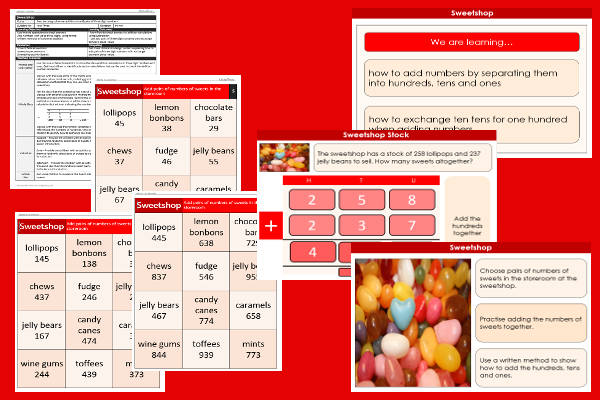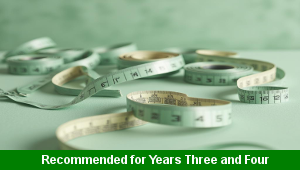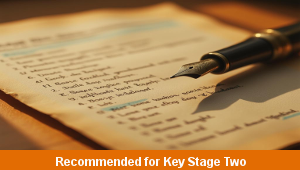Lesson Four – Sweetshop

This maths teaching pack for Key Stage Two gets the children to practise using columnar addition to add pairs of three digit numbers to calculate sweets for sale in a shop including using exchange between place value to complete each calculation.
The class can explain and model how to exchange ten ones for one ten or ten tens for one hundred when solving each addition number problem.
Download this teaching pack including a lesson plan, classroom activities and an interactive presentation to practise using columnar addition to add pairs of three digit numbers to calculate sweets for sale in a shop including using exchange between place value to complete each calculation
Activities in this teaching pack include a differentiated set of worksheets to select and add pairs of two digit numbers for support ability levels and three digit numbers for core and extension ability levels using a columnar addition method to calculate sweets for sale in a shop.
The interactive presentation gets the children to explore how to use columnar addition to add pairs of three digit numbers to calculate sweets for sale in a shop.
This lesson is part of a maths scheme of work to get the children to practise using mental and written calculation methods to add three digit numbers with one, two and three digit numbers including informal and formal columnar techniques with exchange between place value. There are teaching activities for shared learning, differentiated worksheets to support independent learning and interactive presentations to introduce concepts and key skills.
-

Length Calculations
Practise using number calculations skills for addition, subtraction, division and multiplication when solving problems related to length measurements
-

Maths Calculations Assessment
Assess abilities in solving a range of different number problems for addition and subtraction when working with informal and formal written calculations
-

Determinant Lists
Explain and model how to make lists of objects used and found in different locations to match the correct determinants of a and an
-

English SPAG Assessment
Assess abilities in composing sentences for fiction and non-fiction using the correct spellings, punctuation marks and grammar vocabulary phrases
